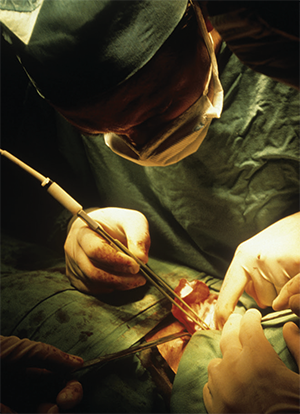NEW ORLEANS—Otolaryngology’s ever-advancing frontier was on display here at the Triological Society Combined Sections Meeting in a session on new developments in pediatric otology, hearing loss in adults, Eustachian tube treatment, and nerve monitoring during bilateral thyroidectomy.
Explore This Issue
March 2017Drug Delivery with Nanogel
Daniel Choo, MD, director of pediatric otolaryngology-head and neck surgery at Cincinnati Children’s Hospital Medical Center in Ohio, said using nanogel could be a better way to deliver therapies to the inner ear. In cases of childhood hearing loss caused by a cytomegalovirus (CMV) infection, prompt antiviral treatment can stabilize hearing or improve it, but more than 60% of children taking ganciclovir have to stop taking it or cut back on the dose because of Grade 3 or 4 neutropenia.
Standard application to the inner ear gives a quick peak in activity and doesn’t give the sustained response that’s needed, Dr. Choo said.
But a nanogel, which starts as a liquid at room temperature and gelatinizes at body temperature, can be used for a slower, more regular drug delivery. “Over that time,” Dr. Choo said of four-month results, “you get a much more sustained drug delivery, and it obviates this problem.” Since CMV-related hearing loss is also associated with an inflammatory response, nanogel has been developed to deliver a combination of both an antiviral and dexamethasone. Safe delivery was shown in guinea pigs in a study published last year. (Int J Pediatr Otorhinolaryngol. 2016;84:132-6.)
Favorable results using nanogel have also been seen in Meniere’s disease, and Dr. Choo said it could potentially be used to help preserve hearing in cochlear implant recipients, for hearing protection in troops, and for other purposes.
Acoustic Hearing

© Dopamine / Science Source
Bruce Gantz, MD, professor of otolaryngology-head and neck surgery and neurosurgery at the University of Iowa Carver College of Medicine in Iowa City, said evidence is mounting that there is a benefit to taking advantage of preserved hearing in combination with cochlear implantation.
“Functional hearing can be maintained in most of our patients if we’re careful and we use the right electrodes,” he said. For patients who don’t yet have profound hearing loss at the low frequencies—those who still have hearing better than the 85-90-decibel level at 125-500 Hz—the results are favorable, Dr. Gantz said.
In clinical trials, those who have profound hearing loss at high frequencies but acceptable preserved hearing at low frequencies, who also have an implant and use hearing aids, have word recognition rates of between 80% and 83%, Dr. Gantz said. For the best results, it’s important that patients use “all modalities,” he said.